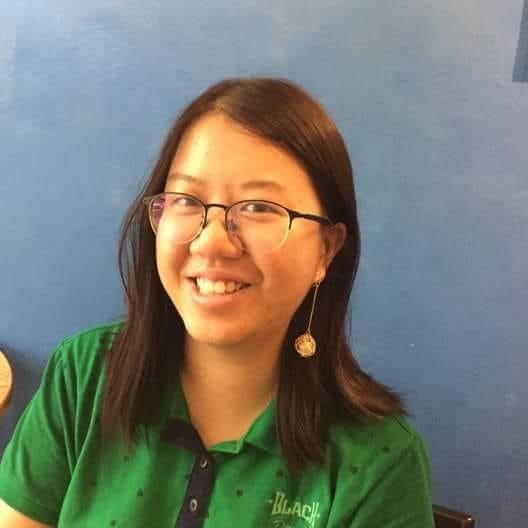Chapters
What is the bridge that connects readers to an engaging plot? It's none other than language.
It is through language that readers can imagine, immerse and be invested in the story from beginning to the end.
In this article, we will review the various language styles in Anita and Me by Meera Syal including:
- Narrative style and voice
- Usage of local dialects and slang
- Imagery and symbolism
- The relationship between dialogues and characters

Narrative Style and Voice
Anita and Me is written (narrated) from a first-person view by Meena Kumar, the protagonist.
As a nine-year-old British-born Indian girl who lives with her family in the fictional English town, Tollington, Meena often uses vivid descriptions and reflective narration as she shares her experiences and observations.
As this story is a Bildungsroman, readers also get to see a varied narrative and voice by Meena as the plot progresses.
A literary genre that describes a coming-of-age story of the main character (protagonist), which shows character progression and maturity from childhood.
Meena's descriptions of the people in her neighbourhood are often a blend of her imagination, wicked sense of humour, and realistic observations.
For instance, she doesn't hold back when she describes the physical appearance of Uncle Alan, a young minister of the neighbourhood's Methodist church.
Uncle Alan was the nearest thing we had to a sex symbol in a ten-mile radius. He seemed ancient, at least twenty-eight, but he did have chestnut brown curly hair, a
huge smile, an obscene amount of energy and a huge dimple right in the centre of his chin which looked like someone had got a pencil, placed it on his skin and slowly twirled it round and round on the spot.
(I knew this because I had spent many a happy hour creating dimples in my arms using this very method.)
In the beginning, Meena's narrative voice can sound childish and silly but it can also be quite multi-dimensional. Her layered narrations alongside her personal reflection help readers to immerse themselves in the story.
On the other hand, Meena's personal reflections begin to sound deep and even poetic after she experiences several incidents, especially towards the end of the story.
I had absorbed Nanima’s absence and Robert’s departure like rain on parched earth, drew it in deep and drank from it. I now knew I was not a bad girl, a mixed-up girl, a girl with no name or no place.
Through Meena's varied narrative voice, readers can relate to her change of emotions and appreciate her character growth better.
Usage of Local Dialects and Slang
Throughout the novel, you'll notice two main dialects used in the narrations and conversations apart from standard English.
Meena's family and Indian acquaintances often code-switch between Punjabi and English. Some Punjabi phrases mentioned in the story include junglee which means wild or forest, and tamasha which means a fight.
When someone alternates between languages and dialects in a sentence during their daily conversations.
On the street, in shops, on buses, in parks, I noticed how the volume would go up when they spoke English, telling us kids to not wander off, asking the price of something; and yet when they wanted to say something intimate, personal, about feelings as opposed to acquisitions, they switched to Punjabi and the volume became a conspiratorial whisper.
You may notice that some conversations among the English people in the neighbourhood are written and spelt differently from standard English to reflect the actual pronunciation of the Black Country accent.
That said, Meena's narration showcases the local Tollington dialect (a reflection of the working-class community in the Black Country area) which is mixed with slang and informal English.
Here are some examples:
| Slang/Informal language | Meaning | Examples in the novel |
|---|---|---|
| Wench | Young girl | I knew I was a freak of some kind, too mouthy, clumsy and scabby to be a real Indian girl, too Indian to be a real Tollington wench, but living in the grey area between all categories felt increasingly like home. |
| Duck | A term of endearment | ‘Bloody noice morning, Meena duck!’ as I had scampered past, terrified one day a sudden breeze would swing open the door and I would face the moral dilemma of whether I should ignore or greet an elder sitting on the bog. |
| Jerries | A slang term used by British soldiers to describe the German officers during World War 2 | She pointed at the Player’s Capstan sailor and said, ‘That’s my dad, that is. He wuz in the Navy. He got medals for blowing up the Jerries, like …’ |
| Gob | Mouth | Probably my money as well, I thought, and the idea of ferret-face cleaning his gob with my Nanima’s change made me suddenly burst out with, ‘You made a mistake! You cheated my Nanima!’ |
| Bosting | Great or good | We’m gonna have a bosting time, in’t we?’ |
This helps to make the setting, themes and the characters of the story more believable, where the author uses this language tool to portray the contrast between two cultures in Tollington.
Imagery and Symbolism
Through Meena's vivid narration and imagery description, readers can visualise the surroundings and people in Tollington and also dive deep into her inner emotions.
Meena uses the imagery examples of her history textbooks to express her shame of her association with India where grainy photographs and even modern images from newspaper and television clips portrayed a bad impression of India during the British colonisation.
She believed that's why she struggled to be her true self after listening to Nanima's direct stories about India, which gives her a different imagery about India.

A prevalent symbol that appears throughout the story is none other than the Big House. Described as gloomy and roomy from a set of horror film, the Big House exudes a sense of mystery and eerie vibe from the outside.
Meena eventually found herself going to the Big House for help when Tracey almost drowned in the lake. She later discovered the identity of the Big's House owner — Mr Harinder P. Singh, who currently lives in Tollington with his French wife.
My miracle was complete. The Big House boss was an Indian man, as Indian as my father, and he spoke Punjabi with a village twang to his dog.
Meena also vividly describes how different the Big House is inside — well-furnished and full of good books when she was invited in.
The Big House now serves as a symbol of kindness and new beginnings. It also serves as a reminder that one should not judge something solely on the external appearance and let the fear of the unknown hold us back.
The Relationship Between Dialogues and Characters
Even though the story is narrated entirely by Meena, readers can still tell the distinctive traits for each character through their individual dialogues.
That's because every character has their preferred mannerism, speech expression and pattern, as well as slangs, which could stem from their different personalities and cultural backgrounds.
Meena mostly uses standard English in her everyday conversations, including with her parents. At times, she purposely imitates Anita Rutter's accent and slangs without knowing its true meaning, just to impress her. It shows her traditional upbringing and also great desire to blend in a predominantly white neighbourhood.
On the other hand, her friend, Anita Rutter tends to speak informal English, with a mixture of slang and vulgarities. This reflects her rash behaviors and daring attitude without caring what others think about her.
We hope this article is helpful in terms of enlightening you about how the characters and plot of Anita and Me are brought to life through a series of language styles.












